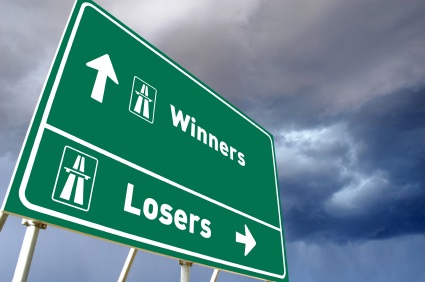
It’s very hard to comment on a list ranking anything — beer, Star Wars movies, or art world figures — without negotiating some serious sass fallout. When reading comments to the 2011 Power 100, published today by Art Review, I thought of tuning my ear by spending a few minutes listening to the trash talk that follows a competition on Drag Race. What would people have to say if Dasha Zhukova gave RuPaul a “bad girl” makeover? Or if Takashi Murakami could talk about how funky his chicken is? And who wouldn’t want to see Damien Hirst lip-sync to the Stacy Q song “Two of Hearts?”
The growing list of gripes in the comments section to Art Review’s list is different only by being less entertaining and slightly bitchier. Art Review also shouldn’t apologize for not including critics or curators from Dubuque or Djibouti on a purported list of people who shape the art world. The “bias” towards local art figures in major cities (Klaus Biesenbach in New York, Hans Ulrich Obrist in London, Alfred Pacquement in Paris) is biased only in that that is where the action is. It isn’t worth pretending otherwise.
The most reasonable complaints come from those who see Art Review’s arbitration as, well, arbitrary. Rankings in The Art Economist’s Top Earning 300 Artists, published every month, are based on the materialistic but nevertheless reliable metric of sales results from global auction records. This summer, living artists Zhang Xiaogang, Peter Doig, Zeng Fanzhi and Richard Prince were all in TAE’s top twelve. Apparently Art Review couldn’t include them in the top one hundred without taking spaces meant for Nicolai Wallner and Miuccia Prada. Until a few moments ago, we weren’t aware that the Miu Miu lady collected art, or that she trained and performed as a mime for several years. Good to know.
Least discerning of all are the moves of veteran artists from one spot on the list to another. Cindy Sherman, ranked twenty-seventh last year, has moved up to the top ten for her “collaboration” (read: endorsement) with MAC Cosmetics. It’s worth mentioning that in her original contract with MAC, Sherman had agreed only for her name to be used in captions of the photographs she took for the campaign. “Collaboration” is more than a stretch. It’s a misnomer. We’re talking about a MacArthur fellow who has had solo shows at the Met, the Whitney, the Jeu de Paume, and the Venice Biennale. Following the MAC campaign, does she really need the Art Review to testify that the “uncompromising assault on bodily ideals [she] began during the 1970s still has bite?”
We all know how much strength and resilience the artist Ai Weiwei showed after he was arrested in April and detained for several months by the Chinese government. He was belittled, accused of “economic crimes” that were obviously fabricated, kept in a tiny room, and subjected to considerable psychological abuse. This year, he takes the top spot on the Art Review one hundred’s list, displacing the gallerist Larry Gagosian, who held it in 2010. We wonder if Ai cares.


{ 5 comments }
Okay, hold up: Nicolai Wallner was an *excellent* choice. That gallery’s programming is sick. That said, I’d add that the whole list doesn’t make much sense without any Chinese artists not named “Ai Weiwei”, particularly when the story of the season seems to be that Chinese art buyers buy art… in China [shock].
Maybe Ai gets a trophy?
Current show not withstanding. Man, what a dog.Â
http://www.nicolaiwallner.com/exhibitions.php?action=details&id=15
How do they actually decide who’s on the list and who goes where? Because, not to throw shade, but some of these names seem a bit random. I mean, Zizek?
Cindy S. had a show at the Modern, not the Met
In the editorial of the magazine it explains that financial clout is not the sole reason for inclusion, but also influence on younger artists. So an artist who doesn’t have nearly as much money in the bank can leapfrog just because they’re work in damn good and inspiring a generation below
Comments on this entry are closed.